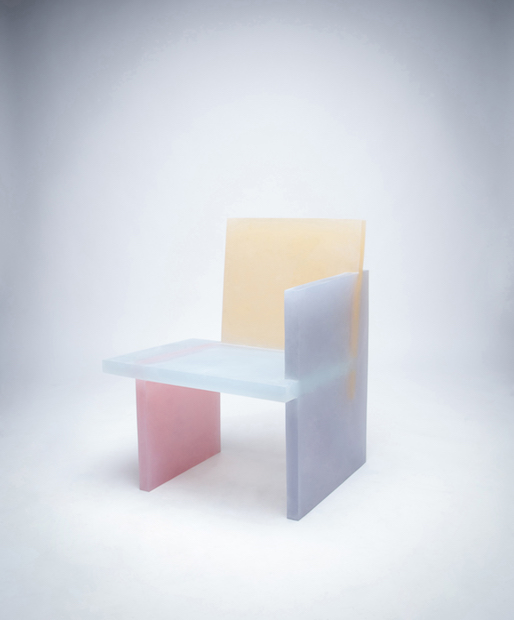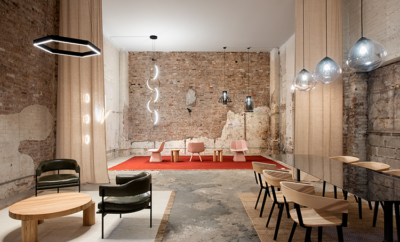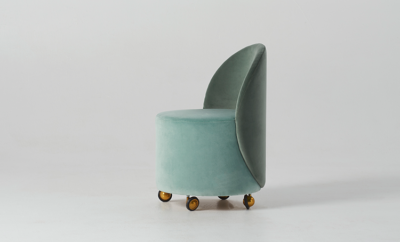 Plain Cuts, Four Plates Low Table. Images courtesy of Carpenters Workshop Gallery.
Plain Cuts, Four Plates Low Table. Images courtesy of Carpenters Workshop Gallery.
Exhibition
Wonmin Park debuts Plain Cuts at Carpenters Workshop Gallery
Taking a close look at Ai Weiwei’s Gilded Cage, currently installed in Central Park, Wonmin Park takes note of how the sculpture was welded together. The South Korean Paris-based designer—having recently mastered metal work and construction himself—is in town to unveil his new Plain Cuts furniture collection as part of his first US solo show, on view at Carpenters Workshop Gallery until April 14th. A marked departure from his acclaimed colored-resin Haze series, the new minimal works were created using a secret and experimental technique that flawlessly combines aluminum sheets without any evidence of welding marks. The ten tables, chairs, benches, shelving units, and lamps that make up the collection demonstrate a level of seemingly impossible precision. Still, it’s important for Park that these essential forms express emotion and reflect his identity.
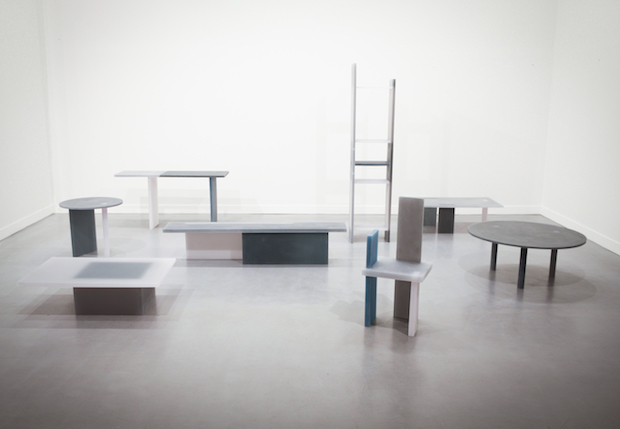
Haze series white, gray and navy. Images courtesy of Carpenters Workshop Gallery.
The talent emerged from the Design Academy Eindhoven in 2012 with his now iconic Haze Chair. By combining four cast-resin slabs in different monochromatic pastel hues, Park was able to play with the transparent quality of the material. The color of one horizontal element shows through the surface of a conjoined vertical element, revealing the chair’s construction. Discovered by influential Milanese gallerist Rossana Orlandi in 2013, Park was catapulted onto the international design scene. For the next four years, the designer was prolific in producing new iterations and applications. He explored different color combinations and continued to push the boundaries of proportion. Furniture pieces in this cumulative oeuvre feature prominently in major exhibitions, as well as in private and public collections including the National Museum of Modern and Contemporary Art, Korea.
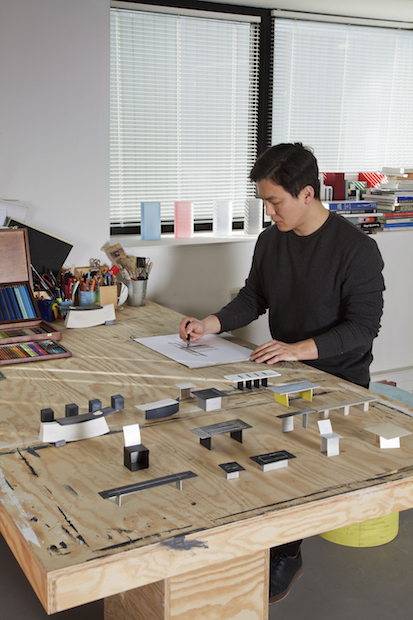
Wonmin Park. Image courtesy of Carpenters Workshop Gallery.
The title of the new collection hints at Park’s interest in exploring simpler materials. “After working with the temperamental nature of resin, I wanted to use something more ordinary, something as plain as yogurt,” he jokes. “I chose to work with aluminum for its strength but also because it’s part of our immediate surroundings. Instead of casting it, I decided to cut it.” However, there are still clear links between the two extensive projects. The designer’s processes, use of established or adapted techniques, and final results are always guided by the inherent characteristics of a pure material. Though crucial in defining the work as design and not sculpture, functionality comes second. “Calling it furniture is the minimum requirement,” Park explains. “It is more about aesthetic value—a space in which I can experiment.”
Plain Cuts not only champions the commonality of aluminum but also challenges the limits of its properties. Park and the artisans—working at Carpenters Workshop Gallery’s Paris production facility—put a lot of time and effort into experimenting with different chemical reactions to achieve the black, grey, and white patinas that define this collection. “The colors were not painted on and actually come from the material itself,” the designer notes. “Though there is less texture, the combination of different patinas reminds my collectors and followers of the Haze series. Color is how I express emotion.” This quality is best exemplified in the Plain Cuts Console that features a white to black gradient on its top surface. Like the Haze Series, structural elements are also left exposed. “The tables have a kind of grid,” he explains. “The structural supports below cut through the surface and create a kind of functional contradiction, splitting table surfaces into different parts.”
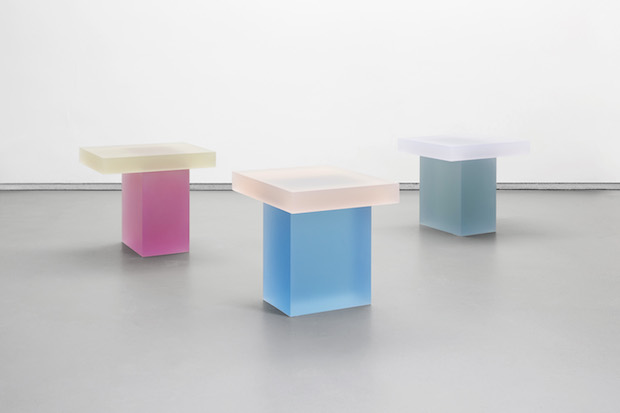
Haze Stool, 2015. Image courtesy of Carpenters Workshop Gallery.
Though Korean and European influences have an impact on his work, Park has charted his own course. “Though they’re minimal, the works are about what interests me. Still, I don’t want to create designs that require long descriptions to be understood, but at the same time, I don’t just want to shape objects without meaning. The works should speak for themselves.”


